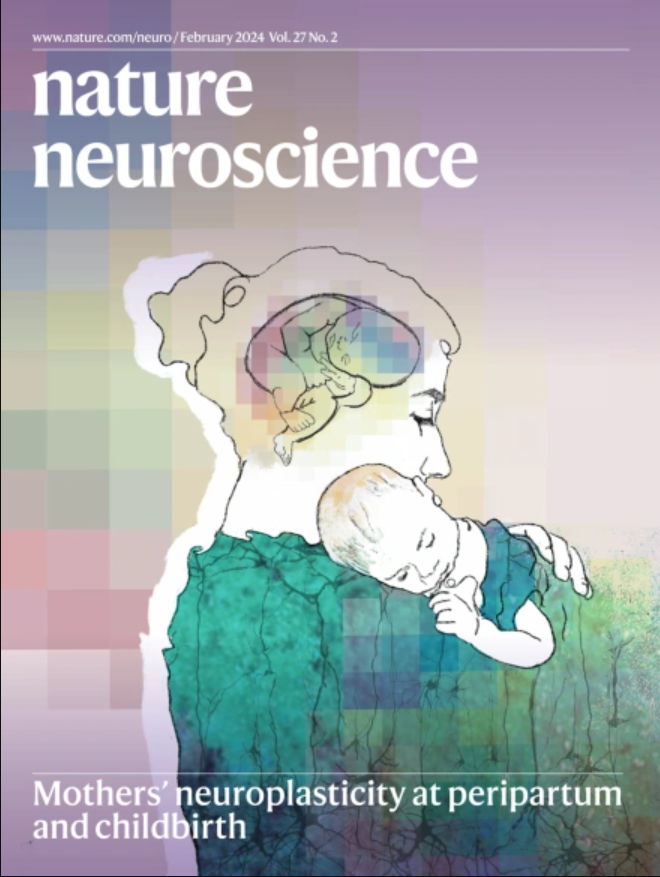自闭症小鼠模型中常见的计算和神经异常
IF 20
1区 医学
Q1 NEUROSCIENCES
引用次数: 0
摘要
计算精神病学研究表明,患有自闭症谱系障碍(ASD)的个体会僵化地更新他们的期望。在这里,我们利用高产量的啮齿动物心理物理学,广泛的行为建模和全脑单细胞细胞外记录来评估与ASD相关的不同遗传扰动的小鼠是否表现出相同的计算异常,如果是这样,那么不同基因型的神经生理特征是共享的。携带Fmr1、Cntnap2或Shank3B突变的小鼠在决策过程中表现出迟钝的先验更新。与灵活更新先验的小鼠相比,不灵活更新先验与先验编码权重从感觉皮层向额叶皮层的转移有关。此外,ASD小鼠模型的额叶区域显示出更多的编码单元偏离动物的长期先验,并且感觉反应在预期和意外的观察结果之间没有区别。这些发现表明ASD的不同遗传实例可能产生共同的神经生理和行为表型。本文章由计算机程序翻译,如有差异,请以英文原文为准。


A common computational and neural anomaly across mouse models of autism
Computational psychiatry studies suggest that individuals with autism spectrum disorder (ASD) inflexibly update their expectations. Here we leveraged high-yield rodent psychophysics, extensive behavioral modeling and brain-wide single-cell extracellular recordings to assess whether mice with different genetic perturbations associated with ASD show this same computational anomaly, and if so, what neurophysiological features are shared across genotypes. Mice harboring mutations in Fmr1, Cntnap2 or Shank3B show a blunted update of priors during decision-making. Compared with mice that flexibly updated their priors, inflexible updating of priors was associated with a shift in the weighting of prior encoding from sensory to frontal cortices. Furthermore, frontal areas in mouse models of ASD showed more units encoding deviations from the animals’ long-run prior, and sensory responses did not differentiate between expected and unexpected observations. These findings suggest that distinct genetic instantiations of ASD may yield common neurophysiological and behavioral phenotypes. Noel et al. show aberrant updating of expectations in three distinct mouse models of autism spectrum disorder. Brain-wide neurophysiology data suggest this stems from excess units encoding deviations from prior mean and a lack of sensory prediction errors in frontal areas.
求助全文
通过发布文献求助,成功后即可免费获取论文全文。
去求助
来源期刊

Nature neuroscience
医学-神经科学
CiteScore
38.60
自引率
1.20%
发文量
212
审稿时长
1 months
期刊介绍:
Nature Neuroscience, a multidisciplinary journal, publishes papers of the utmost quality and significance across all realms of neuroscience. The editors welcome contributions spanning molecular, cellular, systems, and cognitive neuroscience, along with psychophysics, computational modeling, and nervous system disorders. While no area is off-limits, studies offering fundamental insights into nervous system function receive priority.
The journal offers high visibility to both readers and authors, fostering interdisciplinary communication and accessibility to a broad audience. It maintains high standards of copy editing and production, rigorous peer review, rapid publication, and operates independently from academic societies and other vested interests.
In addition to primary research, Nature Neuroscience features news and views, reviews, editorials, commentaries, perspectives, book reviews, and correspondence, aiming to serve as the voice of the global neuroscience community.
 求助内容:
求助内容: 应助结果提醒方式:
应助结果提醒方式:


